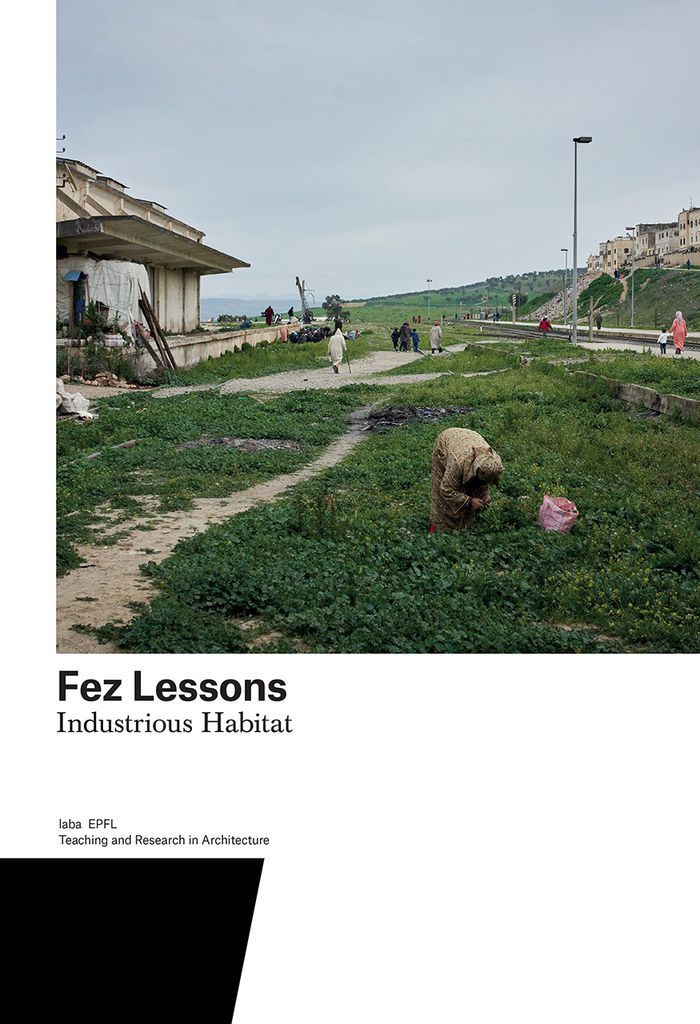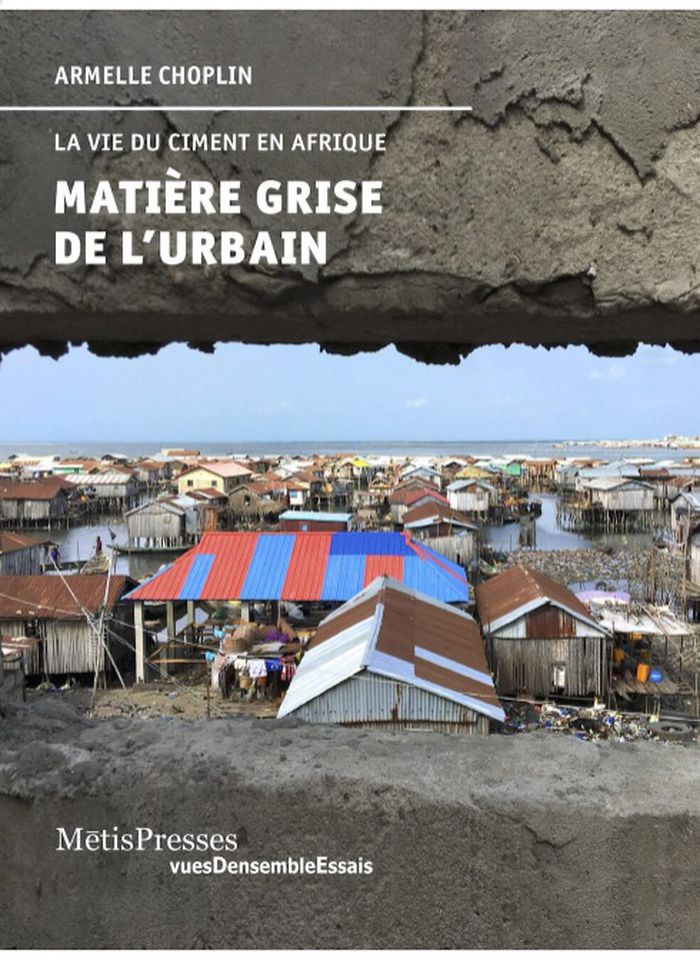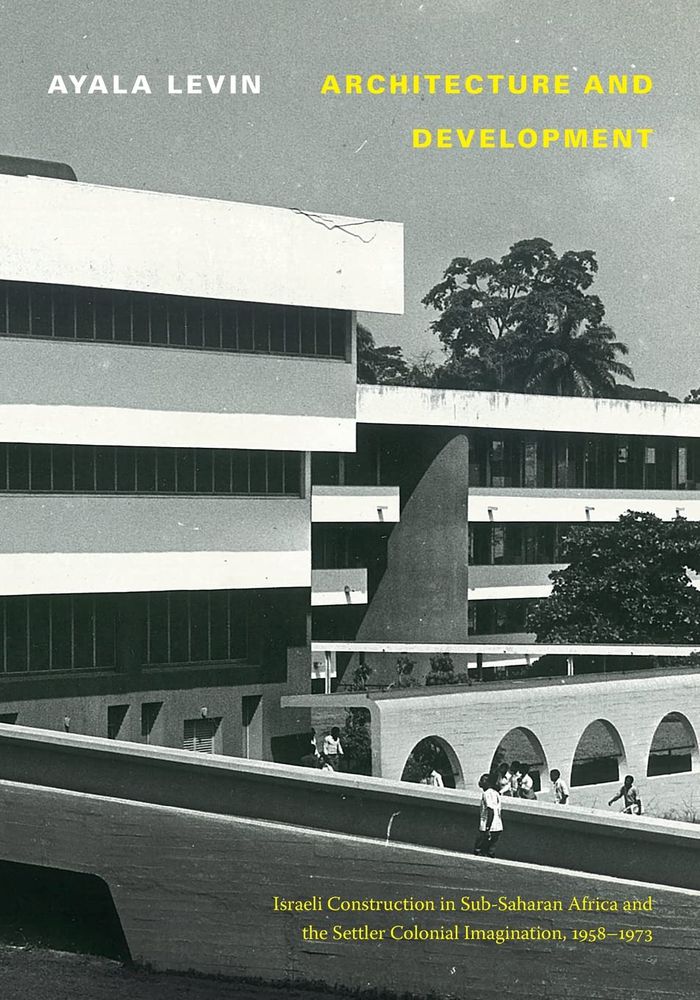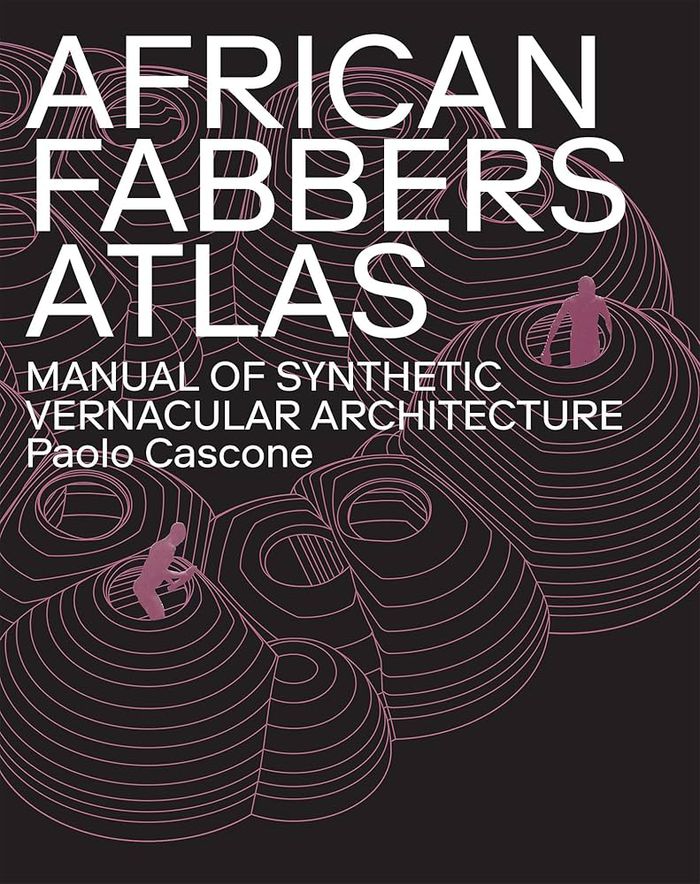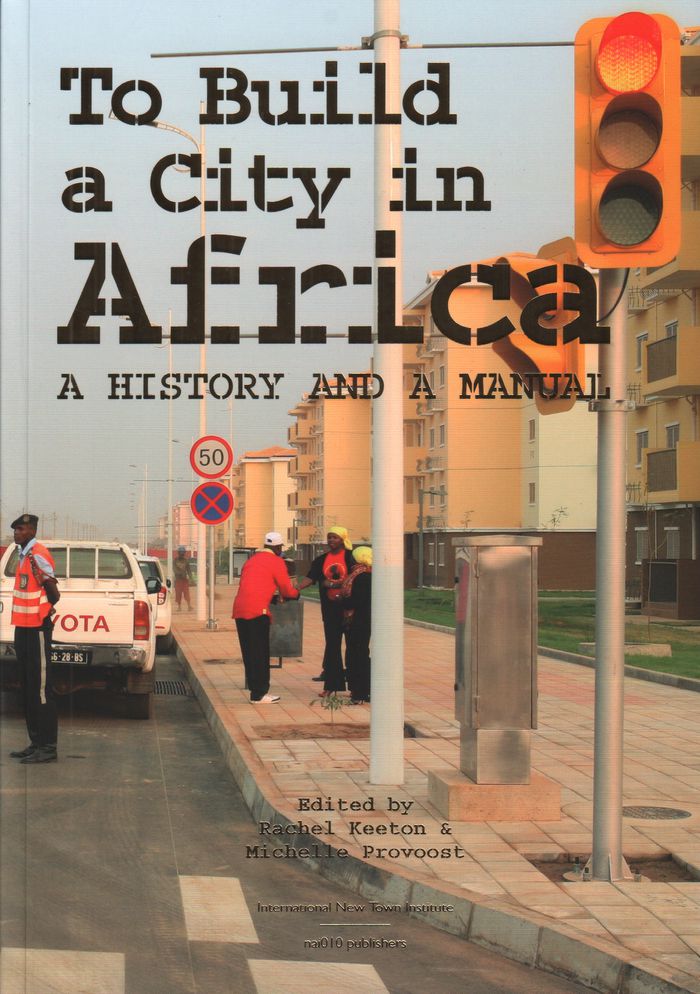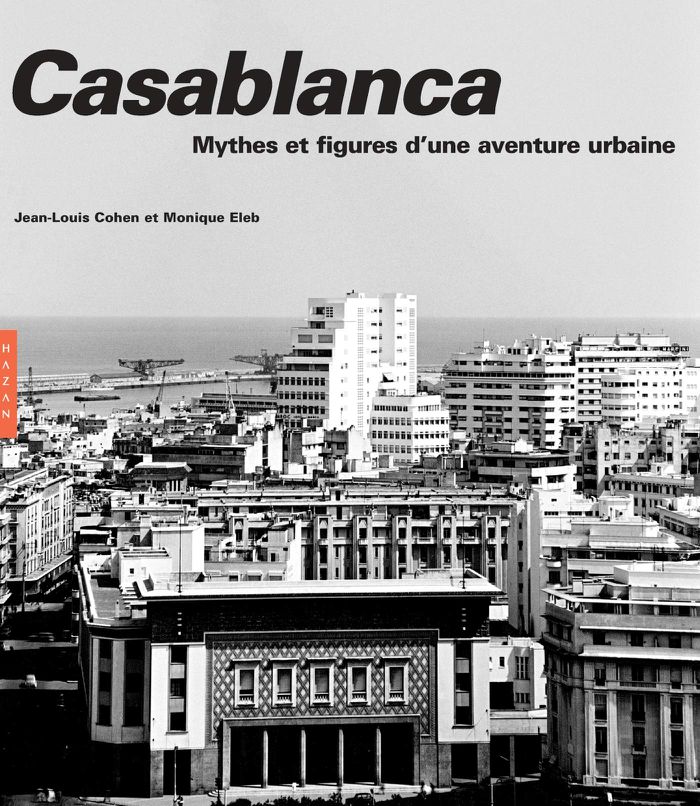$71.95
(available to order)
Summary:
This publication looks at Fez, Morocco's famous former capital and today its second-largest city. Based on a recent research program conducted by EPFL's Laboratory Basel (laba), it investigates how these clashes have marked the city's socioeconomic structure and urban fabric, and whether or not it offers alternative and relevant means of human association and(...)
Architecture since 1900, Africa
June 2020
Fez Lessons: industrious habitat
Actions:
Price:
$71.95
(available to order)
Summary:
This publication looks at Fez, Morocco's famous former capital and today its second-largest city. Based on a recent research program conducted by EPFL's Laboratory Basel (laba), it investigates how these clashes have marked the city's socioeconomic structure and urban fabric, and whether or not it offers alternative and relevant means of human association and community. Given the growing stream of large-scale international investment, the constant enticement of tourism, and a worldwide revival of nationalism, Laba's student's and researchers were looking for tiny cues, nagging doubts, and signs of the fusion between form and life, raising questions about identity, authenticity, tradition, the globalisation of culture, and the use of local resources. Their findings are visualised in the book in striking images, graphics and maps. Students' proposals for architectural interventions addressing these issues are presented through images and plans.
Architecture since 1900, Africa
$37.95
(available to order)
Summary:
L’Afrique connaît aujourd’hui une croissance urbaine rapide qui se traduit par une multiplication des constructions en béton. Le ciment, composant essentiel de ce matériau, est devenu le symbole de cette urbanisation frénétique qui bouleverse le paysage des villes africaines. Plus qu’une simple matière inerte, il se charge d’affect et de valeurs et redéfinit les pratiques(...)
Matière grise de l'urbain : la vie du ciment en Africa
Actions:
Price:
$37.95
(available to order)
Summary:
L’Afrique connaît aujourd’hui une croissance urbaine rapide qui se traduit par une multiplication des constructions en béton. Le ciment, composant essentiel de ce matériau, est devenu le symbole de cette urbanisation frénétique qui bouleverse le paysage des villes africaines. Plus qu’une simple matière inerte, il se charge d’affect et de valeurs et redéfinit les pratiques et les imaginaires de sociétés en quête d’émergence économique et de réussite sociale, alors même qu’à l’heure du dérèglement climatique des voix s’élèvent pour dénoncer une industrie cimentière aux effets destructeurs sur l’environnement. Pour comprendre la production et la consommation grandissante de cette poudre banale devenue « or gris », Armelle Choplin nous invite à suivre les sacs de ciment sur les routes ouest-africaine, le long du corridor urbain de 500 km qui relie Accra, Lomé, Cotonou et Lagos. Depuis la carrière de calcaire jusqu’à la parcelle en chantier, l’auteure nous amène à la rencontre des géants du secteur, des investisseurs, des acteurs politiques mais aussi des maçons et des habitants qui construisent leur propre maison « en dur ». À travers l’exploration d’une filière au coeur de multiples enjeux politiques, sociaux et économiques, cet ouvrage nous appelle à repenser les rapports étroits qui lient l’urbain, l’humain et le monde.
Architecture since 1900, Africa
$36.95
(available to order)
Summary:
In this volume, Ayala Levin charts the settler colonial imagination and practices that undergirded Israeli architectural development aid in Africa. Focusing on the ''golden age'' of Israel’s diplomatic relations in and throughout the continent from 1958 to 1973, Levin finds that Israel positioned itself as a developing-nation alternative in the competition over aid and(...)
Architecture and development: Israeli construction in sub-saharan Africa 1958-1973
Actions:
Price:
$36.95
(available to order)
Summary:
In this volume, Ayala Levin charts the settler colonial imagination and practices that undergirded Israeli architectural development aid in Africa. Focusing on the ''golden age'' of Israel’s diplomatic relations in and throughout the continent from 1958 to 1973, Levin finds that Israel positioned itself as a developing-nation alternative in the competition over aid and influence between global North and global South. In analyses of the design and construction of prestigious governmental projects in Nigeria, Sierra Leone, and Ethiopia, Levin details how architects, planners, and a trade union--owned construction company staged Israel as a new center of nonaligned expertise. These actors and professionals paradoxically capitalized on their settler colonial experience in Palestine, refashioning it as an alternative to Western colonial expertise. Levin traces how Israel became involved in the modernization of governance, education, and agriculture in Africa, as well as how African leaders chose to work with Israel to forge new South-South connections. In so doing, she offers new ways of understanding the role of architecture as a vehicle of postcolonial development and in the mobilization of development resources.
Architecture since 1900, Africa
$73.50
(available in store)
Summary:
On February 29, 1960, a catastrophic earthquake devastated the Moroccan coastal city of Agadir, erasing it almost entirely and killing a third of its population. The world was shocked, and very quickly large amounts of international aid arrived. Following an emotional speech by King Mohammed V, the reconstruction of Agadir also turned into an undertaking of national and(...)
Architecture since 1900, Africa
October 2022
Agadir: Building the modern Afropolis
Actions:
Price:
$73.50
(available in store)
Summary:
On February 29, 1960, a catastrophic earthquake devastated the Moroccan coastal city of Agadir, erasing it almost entirely and killing a third of its population. The world was shocked, and very quickly large amounts of international aid arrived. Following an emotional speech by King Mohammed V, the reconstruction of Agadir also turned into an undertaking of national and international solidarity. A new and unprecedented process of urban construction was developed that allowed many architects—national and international—to simultaneously design the new city. The result of this joint effort was astounding. In a very short time, the new Agadir rose from the ashes. The best Moroccan and international architects experimented with novel housing typologies, which mediated between ultramodern and vernacular ways of dwelling, complemented by innovative public structures, such as schools, dispensaries, and cinemas. All of these combined into an original urban reality: a modern Afropolis.
Architecture since 1900, Africa
$65.95
(available to order)
Summary:
This book contributes to the development of new architectural approaches to informal neighborhoods and to a better understanding of human habitats that relate spatial issues to broader economic and political questions. The contributors analyze feasible and effective practical actions located in Africa, Latin America, and India, drawing upon empiric work to contextualize(...)
Critical neighbourhoods: the architecture of contested communities
Actions:
Price:
$65.95
(available to order)
Summary:
This book contributes to the development of new architectural approaches to informal neighborhoods and to a better understanding of human habitats that relate spatial issues to broader economic and political questions. The contributors analyze feasible and effective practical actions located in Africa, Latin America, and India, drawing upon empiric work to contextualize existing neighborhoods. Complementing essays explore the deeply intertwined nature of spatial practice, cultural identity, and social engagement. Together, the contributors AbdouMaliq Simone, Paulo Moreira, Elisa Silva, Julia King, and Ines Weizman uncover new modes of making architecture; map new ways for architects to engage with contested communities; address geographic differentiations on a local scale, rather than between various continents only; and explore interconnections between particular neighborhoods and their wider contexts. A conversation between the five contributors, moderated by Matthew Barac, rounds out this volume.
$55.00
(available to order)
Summary:
This edited collection of essays and image-driven pieces by anthropologists, archaeologists, architects, and historians examines the legacies of African architecture from around the time of independence through examples from different countries. Drawing on ethnography, archival research, and careful observation of buildings, remains, and people, the case studies seek to(...)
Architecture since 1900, Africa
September 2022
African modernism and its afterlives
Actions:
Price:
$55.00
(available to order)
Summary:
This edited collection of essays and image-driven pieces by anthropologists, archaeologists, architects, and historians examines the legacies of African architecture from around the time of independence through examples from different countries. Drawing on ethnography, archival research, and careful observation of buildings, remains, and people, the case studies seek to connect the colonial and postcolonial origins of modernist architecture, the historical processes they underwent, and their present use and habitation, adaptation, and decay. Deriving from a workshop in connection with the 2015 exhibition ''Forms of Freedom'' at the National Museum in Oslo and the Venice Biennale, the volume combines recent developments in architectural history, the anthropology of modernism and of material culture, and contemporary archaeology to move beyond the admiration or preservation of prized architectural ''heritage'' and to complicate the contemplation—or critique—of ''ruins'' and ''ruination.''
Architecture since 1900, Africa
$48.95
(available in store)
Summary:
How to respond to climatic changes reconciling nature with tekné? What is the social role of technology? How architects would reconsider their practices supporting community-oriented projects? The theoretical assumption for this investigation is based on the observation of cause-effect relations, between different urban and architectural configurations and their(...)
African Fabbers Atlas: Manual of synthetic vernacular architecture
Actions:
Price:
$48.95
(available in store)
Summary:
How to respond to climatic changes reconciling nature with tekné? What is the social role of technology? How architects would reconsider their practices supporting community-oriented projects? The theoretical assumption for this investigation is based on the observation of cause-effect relations, between different urban and architectural configurations and their performances: social, environmental, structural etc. in both pre-colonial and informal cultures around Africa. The diachronic approach intends to generate, after many years of post-colonial studies, an operative agenda of possible strategies, which is in accordance with different conditions starting from the anthropological and the climatic ones. Such an agenda responds to a global cultural need for an ecological shift in the contemporary design and manufacturing processes, which should bridge high and low-tech cultures. Therefore, the book is conceived also as a sort of manual that is articulated around emergent principles inspired by traditional and informal African practices and architectures: self-similarity and diversified typologies, material optimisation and circular economy, self-sufficiency and responsive dwellings.
Architecture since 1900, Africa
$65.00
(available to order)
Summary:
Africa’s population and economic growth make it the world’s fastest urbanizing continent. While some might still associate Africa with rural development, the future of Africa is, in fact, very urban. This urbanization is a huge challenge in areas with fragile institutional frameworks and chronic poverty. Many migrants moving to the city end up in self-organized(...)
To build a city in Africa: a history and a manual
Actions:
Price:
$65.00
(available to order)
Summary:
Africa’s population and economic growth make it the world’s fastest urbanizing continent. While some might still associate Africa with rural development, the future of Africa is, in fact, very urban. This urbanization is a huge challenge in areas with fragile institutional frameworks and chronic poverty. Many migrants moving to the city end up in self-organized settlements without basic services. ''Urban Africa'' brings together authors from various academic, political, and design backgrounds: as well as case studies on new towns in Ghana, Egypt, South Africa, Angola, Morocco, Kenya etc. In this way, the book provides a critical narrative about contemporary ''Urban Africa'' and the western world’s role – if any – in the radical transformations happening today.
Architecture since 1900, Africa
$35.95
(available to order)
Summary:
Over the past decade, Ethiopia has had one of the world's fastest growing economies, largely due to its investments in infrastructure, and it is through building dams, roads, and other infrastructure that the Ethiopian state seeks to become a middle-income country by 2025. Yet most urban Ethiopians struggle to meet their daily needs and actively oppose a ruling party that(...)
Under construction: technologies of development in urban Ethiopia
Actions:
Price:
$35.95
(available to order)
Summary:
Over the past decade, Ethiopia has had one of the world's fastest growing economies, largely due to its investments in infrastructure, and it is through building dams, roads, and other infrastructure that the Ethiopian state seeks to become a middle-income country by 2025. Yet most urban Ethiopians struggle to meet their daily needs and actively oppose a ruling party that they associate with corruption and mismanagement. In "Under Construction" Daniel Mains explores the intersection of development and governance by examining the conflicts surrounding the construction of specific infrastructural technologies: asphalt and cobblestone roads, motorcycle taxis, and hydroelectric dams. These projects serve as sites for nation building and the means for the state to assert its legitimacy.
Architecture since 1900, Africa
$69.95
(available in store)
Summary:
Chantée par les sagas de la colonisation, mise en scène par Hollywood, pôle d'attraction pour les Européens et les Marocains, Casablanca est d'abord une collection exceptionnelle d'espaces urbains, de maisons, de jardins. Les auteurs retracent de 1900 à 1960 la renaissance d'un port presque oublié et sa métamorphose en métropole tumultueuse, façonnée par toutes les(...)
Architecture since 1900, Africa
September 2019
Casablanca : mythes et figures d'une aventure urbaine (n.é. 2019)
Actions:
Price:
$69.95
(available in store)
Summary:
Chantée par les sagas de la colonisation, mise en scène par Hollywood, pôle d'attraction pour les Européens et les Marocains, Casablanca est d'abord une collection exceptionnelle d'espaces urbains, de maisons, de jardins. Les auteurs retracent de 1900 à 1960 la renaissance d'un port presque oublié et sa métamorphose en métropole tumultueuse, façonnée par toutes les cultures méditerranéennes. Les bâtiments significatifs de cette ville métisse sont analysés à partir des archives françaises et marocaines et présentés par des centaines de photographies inédites. Revivent ainsi les clients, les habitants et les architectes inventifs formant la trame humaine d'une scène incomprise mais essentielle de la modernité. Casablanca a eu un impact incontestable sur les politiques patrimoniales marocaines. Des compléments et des précisions ont été apportés pour l'édition de 2004, devenue introuvable. La présente version en reprend les éléments essentiels, complétés par des annexes mises à jour afin de conserver sa valeur scientifique à un ouvrage devenu presque mythique.
Architecture since 1900, Africa
